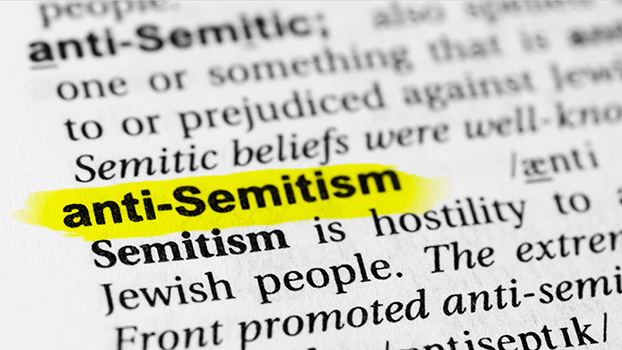WINNIPEG – Understanding what constitutes hatred of Jews is key, both for educational and practical reasons, a panel of international experts agreed in a spirited discussion of the International Holocaust Remembrance Alliance’s (IHRA) definition of anti-Semitism.
At the Jewish Heritage Centre’s annual Sol and Florence Kanee Distinguished Lecture, on April 25, panelists Juliane Wetzel, chair of the IHRA Committee on Anti-Semitism and Holocaust Denial; Leon Saltiel, co-ordinator on Countering Anti-Semitism for the World Jewish Congress; Andre Oboler, founder and CEO of the Online Hate Prevention Institute (OHPI); and Alina Bricman, director of EU Affairs at B’nai B’rith International, discussed the importance of the IHRA definition.
“If you want to fight anti-Semitism you need to define it,” Saltiel said. Anti-Semitism has been around for 2,000 years, he continued, but because it has always mutated with the ups and downs of history, it has not always been easy or obvious to identify. The IHRA definition changes that.
“The IHRA definition is a great document for how simple it is,” he said. “It is its simplicity and ability to reach the ordinary policymaker, policeman, educator, prosecutor and judge that makes it such a great tool, and that it why so many governments and public institutions have adopted it.”
In 2016, following significant international consultation, the IHRA, the only intergovernmental organization devoted exclusively to Holocaust-related issues, adopted a non-legally binding, working definition of anti-Semitism. That definition— Anti-Semitism is a certain perception of Jews, which may be expressed as hatred toward Jews. Rhetorical and physical manifestations of anti-Semitism are directed toward Jewish or non-Jewish individuals and/or their property, toward Jewish community institutions and religious facilities—together with 11 illustrative examples, has since been endorsed by 31 nations and numerous municipalities, law enforcement agencies, academic institutions, and organizations worldwide.
The definition’s value, Bricman added, is not just derived from the way it can be used as a reference tool to help the Jewish community deal with non-Jewish stakeholders, but also, and perhaps more importantly, for the way that it emboldens the Jewish community.
“The definition is a tool for empowering the Jewish community itself to say what its own experience of anti-Semitism has looked like on a daily basis and concrete level,” she said. “It has empowered the community to really speak up about its own oppression.”
That experience of anti-Semitism, according to all the panelists, has become increasingly evident on university campuses in recent years, both in Europe and in North America.
“The definition is important in building trust with Jewish students so that they can feel included in university spaces that have become increasingly hostile to them,” Bricman added. “It is standard and common for universities to have codes of conduct that say what is acceptable behaviour,” she continued, “and most of these standards include language on racism.”
It should be standard, therefore, for these codes of conduct to include language about anti-Semitism. The IHRA definition provides them with that language.
Panelists also debated whether the definition hampers academic freedom, and how the IHRA definition compares to alternative definitions, such as the Jerusalem Declaration on Anti-Semitism, published in March, 2021.
They also discussed anti-Semitism and intersectionality, agreeing that while it is important for the Jewish community to engage on the topic of intersectionality and condemn all forms of racism, it is important for the community not to lose grasp of its own narrative and to insist on a seat at the table whenever racism is being discussed.
The second JHC event in the lecture series will feature a conversation about human rights around the world with Irwin Cotler and Bob Rae on May 13.
